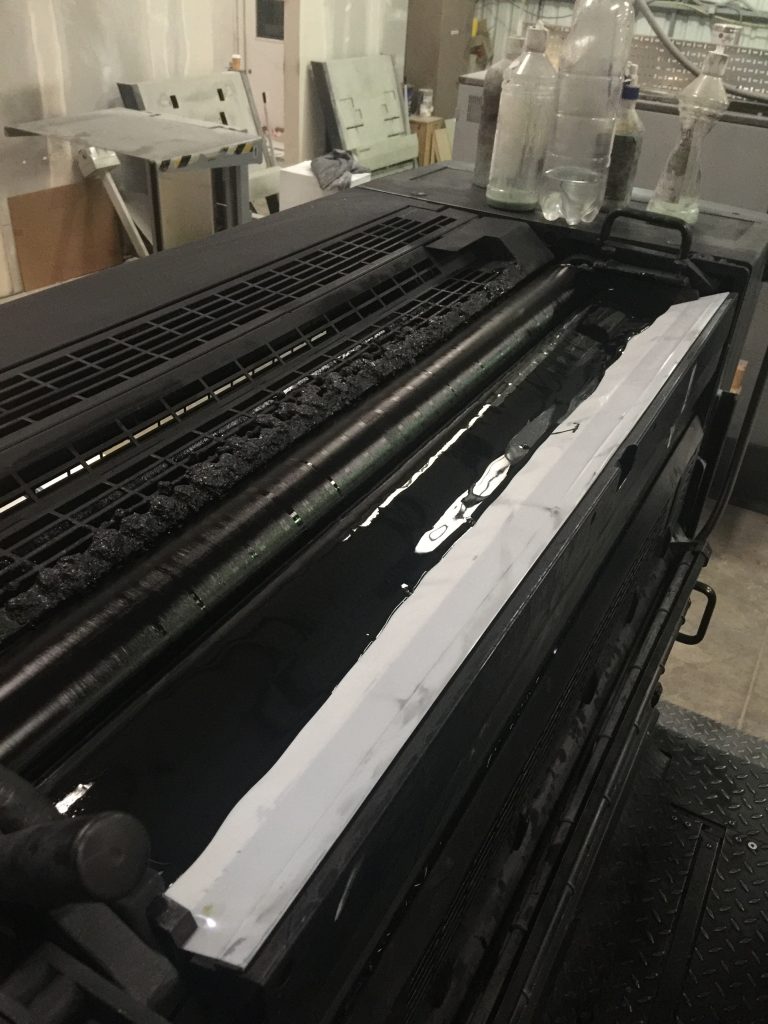So, you are sat one day on the phone to your printer and you are ordering a set of business cards and some letterheads. You go through the spec and the voice on the other end comes back “We can print those digitally”. I would hazard a guess you give a simple “OK” and never think any more about it. Well, do you know what the printing company is saying?
For all, you know it could not be the way you want your job to be printed! So what’s the difference between the Digital Print method and Lithographic Print method?
In short, Digital print is more suited to short-run and Lithographic (Litho) for longer runs. But there is more to it than that.
Litho Print or Offset Litho as it is also referred to. This process involves the burning of a metal plate with lasers to create a “negative” from which to print. Usually, a plate for each colour is produced as the run through a 4-colour process and finally, a sealer is applied. These images show the 4 CMYK colours:




When the press is started or turning, the image is transferred to a rubber blanket and then onto paper. The Litho process relies on the repulsion of Oil and water. In a nutshell, the image you want to print get a coating of ink from the rollers of the press, whereas the areas that don’t require print get a thin film of water to ensure it remains ink-free.
There are several Advantages and Disadvantage with this method of printing
The advantage of Litho print are:
– You will always get a high quality and consistent image across the whole job, regardless of the run size.
– The more you print, the less you pay and the cost is all in the setup
– You can print Spot Colours and metallic inks
– You can print on an array of material, including plastic
The disadvantage is:
– The set-up costs make it expensive for short runs
– The printing process takes longer which, in turn, means a higher turnaround
– There are no options for variable data.
When it comes to digital print, we are not talking about a larger version of a printer you have in your home office. It is somewhat more technical than that!
Digital print is direct imaging directly onto the chosen choice of media. There no plates that needed to be produced for this method. The image is released to the media by applying an electric charge to the metal drum. This charge attracts the toner particle in which are then transferred onto the selected media to produce the image. The substrate is then passed through the fuser to ensure it is fixed properly.
Like with Litho, there are a few advantages and disadvantages:
The advantages are:
– The set-up time is very short meaning orders can be turned around very quickly.
– The images tend to be very vibrant and bright on all materials
– It is more cost-effective for short-run jobs.
– You can personalise the job from a data list which is ideal for direct marketing
He disadvantages include:
– It is not cost-effective for long run jobs
– There is less control of the colours
– There is potential for quality issues
– It is difficult to exactly match specific Pantone colours
For more information on the print methods or advice on the best way to print your job, please do not hesitate to contact me.
